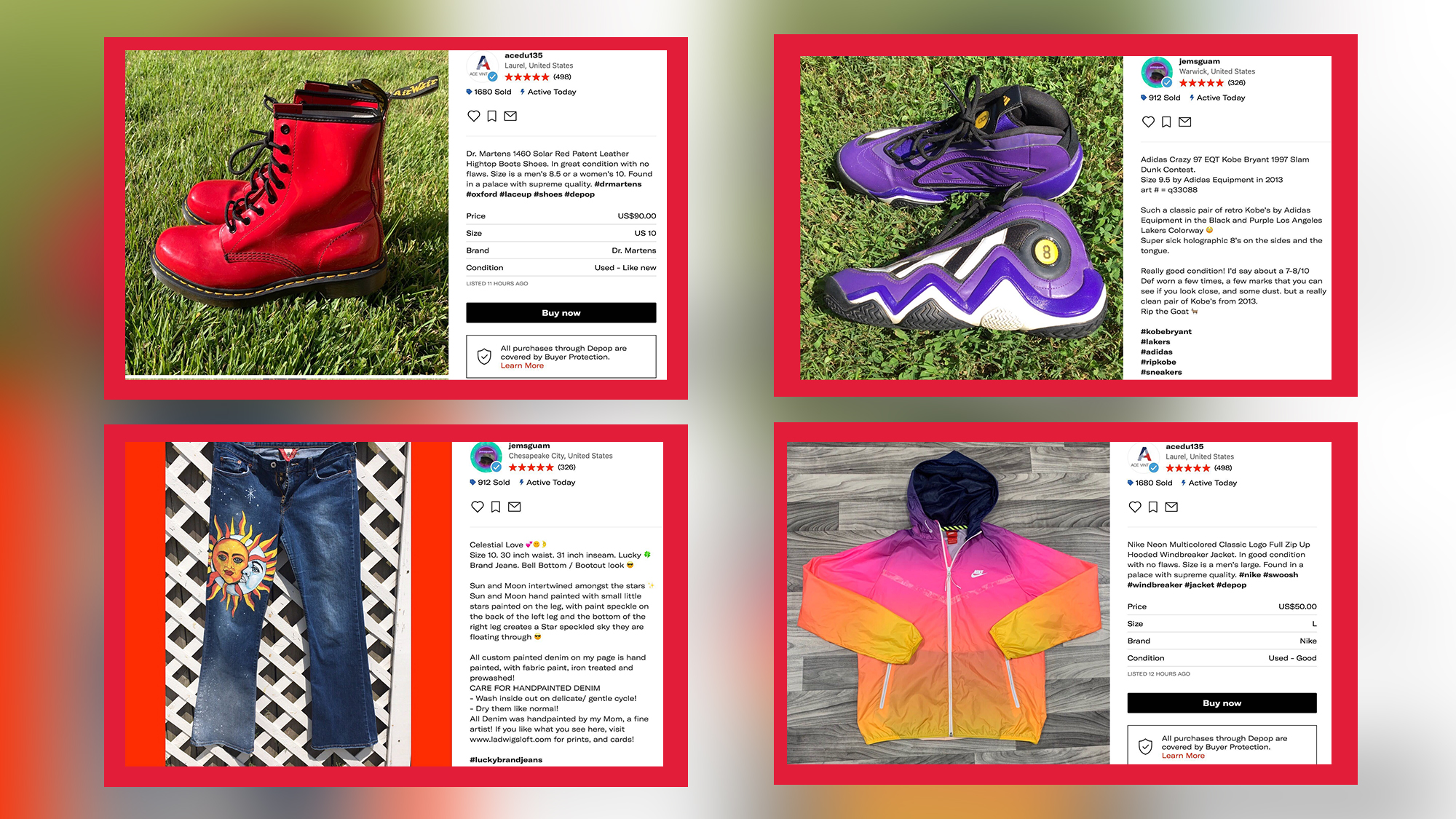Thrifting requires stamina. Digging through racks and bins for hours in search of the perfect items takes time, but ultimately there’s a joy that comes with finding that dream piece. But the thrifting experience has become a little more complicated due to the coronavirus pandemic.
Not all secondhand shops are created equal; each establishment has different standards for item care and sanitation. Once, that notoriously musty thrift store smell was just a part of the experience. Now, the sometimes questionable cleanliness, shared surfaces and crowded aisles are unappealing and potentially unsafe.
But people still want trendy clothes for cheap prices, so they’ve turned to reselling sites such as Depop. Supporting a seller is often seen as a solution to the many problems of in-person shopping, and the platform’s shop owners are definitely profiting.
“They would rather just find a place where they can buy directly from the source and it’s shipped to them,” said Augustine Elue, a seller on the site.
The 29-year-old based in Laurel, Maryland, has noticed an increase in sales since the start of the pandemic, like many other Depop sellers. Elu currently uses Depop as his primary source of income. Though rewarding, it can definitely be stressful.
“It’s not an overwhelming pressure, but it’s kind of like a pressure to really, really be on the grind,” Elue said.
Buying secondhand was already a trend among young adults before the pandemic — younger shoppers tend to prioritize ethics and sustainability when looking for clothes. Thrifting is a more environmentally friendly way to buy clothes, since the items have already been produced and worn.
[The best DC-area thrift stores, ranked]
Supporting Depop sellers instead of fast-fashion retailers seems even more appealing now. Shipping an item from any large brand requires multiple people involved in the process, which results in more opportunities to spread COVID-19. Large companies are also more likely to survive the pandemic with less severe financial losses than the average American small business. Depop has gotten the reputation of one of the best ways to refresh your wardrobe mid-pandemic thanks to its ethical advantages, unique merchandise and easy-to-use interface.
“It’s pretty much like the Instagram of all the selling apps,” said seller Quinn Ladwig. “It’s just nice and streamlined.”
Like Instagram, Depop is popular among a younger demographic. When Ladwig goes thrifting to search for new merchandise for his shop, he tries to keep in mind what a shopper between ages of 16 and 24 would be interested in.
The 23-year-old from Chesapeake City, Maryland, started selling on Depop full-time in March, when the restaurant he worked at closed down.
Ladwig rapidly became a top seller on the app, which means he keeps his account updated like most people would on any other social media platform, Ladwig said.
The key to making money on Depop is listing items that appeal to the niche styles sold on the app, like Y2K trends or modern streetwear, Ladwig said. These customers and sellers use Depop because they are passionate about thrifting and clothing.
“I’m a ’90s baby so the style during that era was kind of reflective of who I am … So I look back at those things, they bring memories,” said Elue.
“My mom, one day, took me to a thrift store,” he said. “I bought a Nike sweatshirt. I still remember it to this day, the color and everything, so it’s nostalgic.”
Elue described a lot of shoppers on the app as “hipsters” who are also looking for those very specific styles — a search that was complicated when thrift stores were closed due to the pandemic.
When he could not go out and thrift for inventory, Elue attempted to make up for this by finding wholesale sellers on Craigslist or Ebay. He even sold items straight from his closet.
Many thrift stores have reopened, which means a lot of sellers can go back to sourcing inventory the way they did before — with new safety precautions. Ladwig emphasized that he wears a mask when entering the store and washes his inventory before selling. This has just become a part of a seller’s daily routine, in addition to photographing inventory and shipping orders.
Though there aren’t a ton of places to wear new outfits right now, customers continue to provide more financial support to Depop sellers. The next time you are spending a day in quarantine online shopping, checking out a Depop shop — it could save you money and give you the same unique finds of a thrift store.



